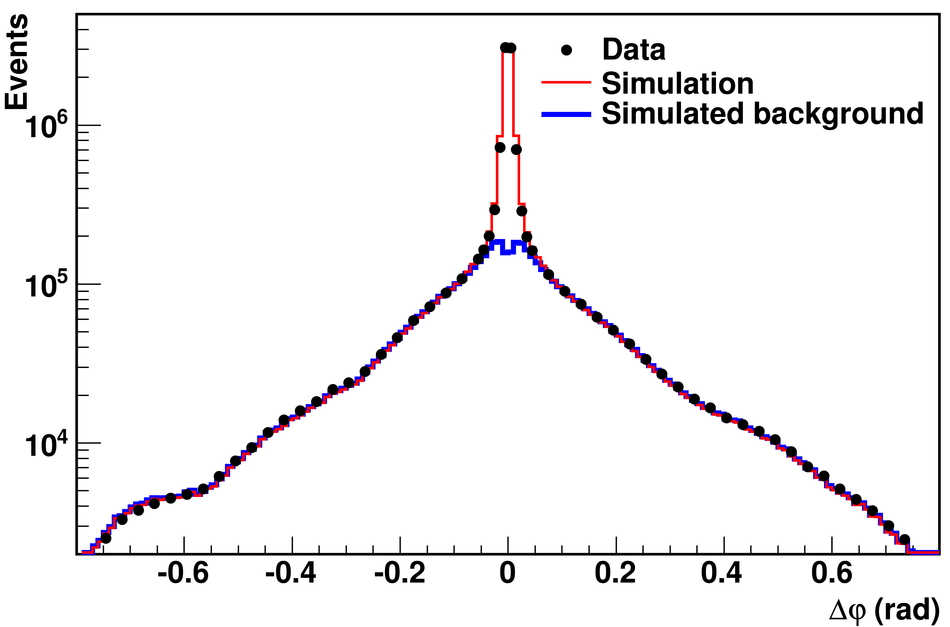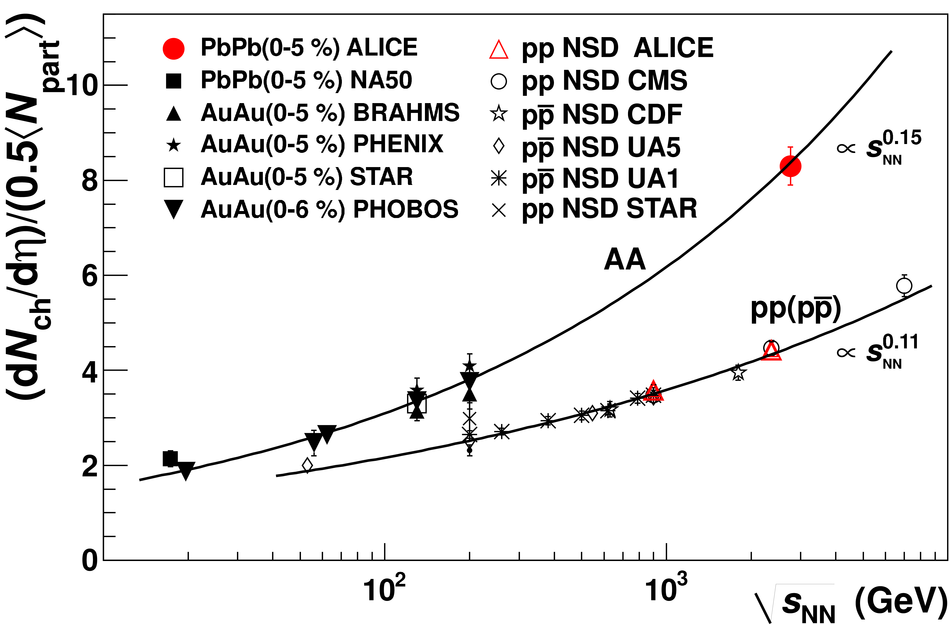The first measurement of the charged-particle multiplicity density at mid-rapidity in Pb-Pb collisions at a centre-of-mass energy per nucleon pair $\sqrt{s_{\rm NN}}$ = 2.76 TeV is presented. For an event sample corresponding to the most central 5% of the hadronic cross section the pseudo-rapidity density of primary charged particles at mid-rapidity is 1584 $\pm$ 4 (stat) $\pm$ 76 (sys.), which corresponds to 8.3 $\pm$ 0.4 (sys.) per participating nucleon pair. This represents an increase of about a factor 1.9 relative to pp collisions at similar collision energies, and about a factor 2.2 to central Au-Au collisions at $\sqrt{s_{\rm NN}}$ = 0.2 TeV. This measurement provides the first experimental constraint for models of nucleus-nucleus collisions at LHC energies.
Phys. Rev. Lett. 105 (2010) 252301
e-Print: arXiv:1011.3916 | PDF | inSPIRE
CERN-PH-EP-2010-060




